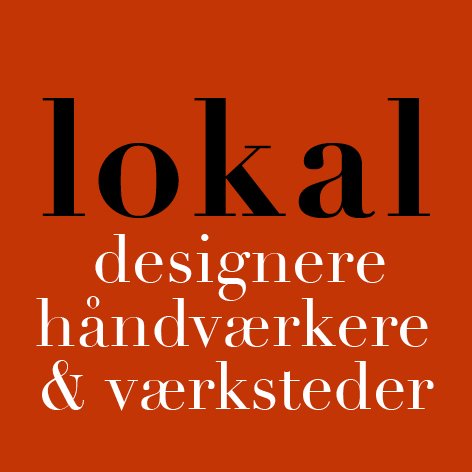Kunsthåndværker Markedet … amazing art or beautiful utility?
/A significant proportion of the ceramic works on show at the craft market were clearly decorative and that’s fine … the potter as ceramic artist or maker. Glass at this level of design and craftsmanship tends to be more practical so there were certainly wine glasses and jugs at the market but still plenty of presentation pieces. Many of the stalls had flowers or fruit in their vases or bowls but this was presumably to make the display as attractive as possible rather than suggest clear practical use.
Believe me, this is not a criticism of the designers and artists but may simply reflect the practical approach of the Danes to buying table ware and glass and ceramics for their dining rooms and kitchens. There is probably a clear division in people’s minds between decorative work and practical table ware. I was just curious that although there were mugs and so on, which were clearly to be seen as something special … a gift or a treat to oneself … it would have been difficult to go around the market and buy enough tableware to set a table for a full dinner.
Perhaps this is not the right venue for that because the Kunsthåndværker Markedet does show the work of some of the best craft artists in the country but on the other hand it does deliberately call itself a craft market and not an art fair.
Again, I repeat, this really is not a criticism of the people showing their work here. It is more a reflection on the perceptions and expectations of the visitors to the market ... the customers. In the Renaissance, in Florence or Paris or Antwerp, the great silver smiths and glassmakers were seen as equals to the artists working as sculptors or painters and great presentation pieces would be the centre of any great table. It seems that now many buyers are still happier spending their money on a “work of art”, meaning a painting or a print, than a comparable amount on a ceramic or glass piece.
There are exceptions …there are serious collectors of art glass and of major ceramic works and pieces by Grayson Perry, for example, achieve astonishing prices.
So the makers inhabit a strange middle ground now … trying to command appropriate price levels to reflect their skill and expertise and the time taken to produce the works.
Nor is this a comment about trying to return to a rose-tinted idea of an idyllic rural past where the local potter or local tin smith made everything the village needed for their tables … they didn’t … in the 17th, 18th and 19th centuries most families outside the towns bought a few special pieces on trips in to the local market. Much was local and, in the pre-industrial period, hand made although wealthy families could and did buy porcelain from the Copenhagen works or from further away in France and Germany, buying prestigious and fine tableware.
It’s just that I’m curious about how Danish families set their tables now. Is there just practical every-day white china from IKEA that goes into the dishwasher without having to think twice or maybe the old inherited service from Royal Copenhagen is used carefully and with respect for every important family meal or are young Danes in Copenhagen scouring the flea markets for china and glass from the 1950s and mixing and matching in an imaginative way?
And although Copenhagen now has a well-deserved reputation for the range and quality of its restaurants and many of those deliberately go to Danish companies or Danish designers for chairs and tables, do any set those tables with Danish craft ceramics or Danish craft glass? Is it simply a matter of price … even the most prestigious restaurant must set a budget for furniture and fittings … or is it that a small independent potter would simply struggle with the practical problems of suddenly having to produce 100 place settings.
In the 1960s, in England, Cranks restaurant used pottery from John Leach’s workshop but then Cranks was exceptional … David Canter who established Cranks, in some ways an English equivalent of Claus Meyer, was not only a pioneer in selling healthy natural food but plans for Cranks were actually conceived when he was working in Carnaby Street on converting a building for the Craft Potters’ Association, of which he was a founding member, and a vacant bakery nearby came on the market and he took that opportunity to produce and sell the food he thought people should be eating on ceramics he appreciated. When we were at university, a school friend had a summer job serving table at Cranks and he told me that a phenomenal amount of china was stolen by customers so clearly it was a good choice … though perhaps not so good for the profit margins.
My budget doesn’t stretch to a grub crawl around the city in search of tables set with crafts-made pottery and glass but I’d be curious to hear about any Danish versions of Cranks.
I actually use pottery from John Leach every day and that is really the point of this post … not to boast about using pottery from Muchelney … but there is that odd phrase about things being “life enhancing” but actually it is true. Taking time to find the right ceramics and the right glass and investing in it but then actually using it every day is life enhancing. If you are half way through a cup of good coffee and you realise just how much you like the cup … that’s life enhancing; if the glass jar looks fantastic and perfect in the kitchen … as well as being practical and air tight and all those things … that’s life enhancing. I’ve used my Leach mugs and tea pots every day for nearly forty years and still enjoy using them … and after that length of time the price tag has been long-forgotten and is totally irrelevant.
mugs by Janni Godtliebsen
glass by Lena Ljungar and Jesper Sødring
glass storage jars by Marion Fortat






